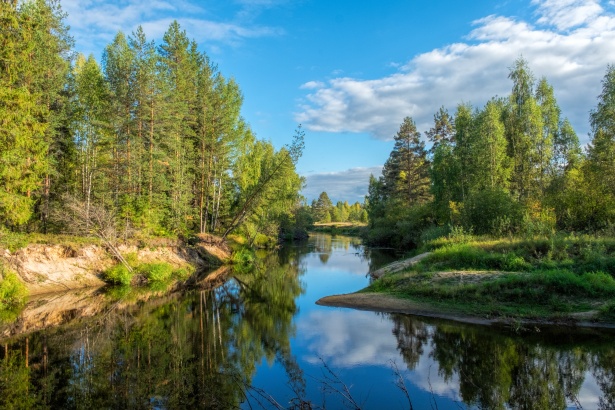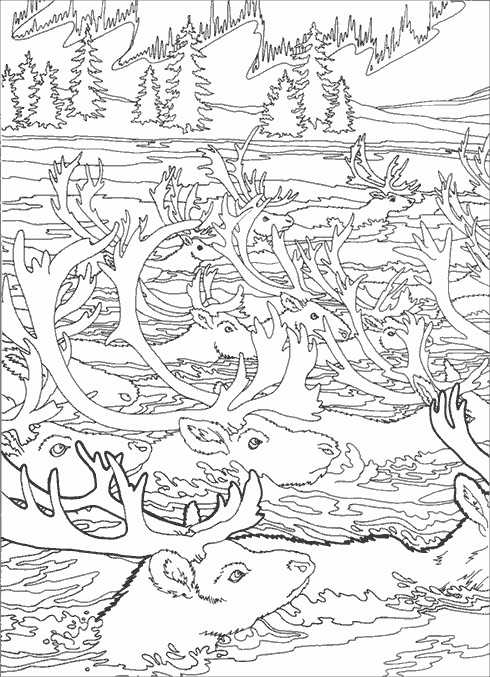
Forests can grow in places where the weather is very hot, and in places where the weather is very cold. But they cannot grow where there is too little water.
Near the North Pole, there is lots of water, but it is always frozen and so it is useless to plants. If you were to go to the North Pole and travel south, you would cover many miles of snow and ice before you saw any plants. Only when you reach an area called the tundra do temperatures rise enough to melt the snow for a few weeks a year. Lichens and mosses thrive in the tundra, but little else.
You would have to travel south a few hundred miles more before you would find the tree line, at the northern edge of the world's northernmost forests. These forests are called the taiga (TIE-gah). They are forests of mostly cone-bearing trees that border the tundra, stretching in an uneven belt around the top of the world.
A taiga is a swampy forest, with many lakes and bogs scattered through it. The treesmostly spruces, cedars, firs, and pinesgrow spaced widely apart. Compared with the dense spruce forests of the northern United States, these trees seem very scattered indeed.
The best-known animals of this forest are reindeer: known in North America as caribou. For generations, people in northern Europe have herded reindeer, much in the same way that people in our country herd cattle. They eat reindeer meat, drink reindeer milk, and make leather from reindeer hides.
BONUS: Color A herd of reindeer







